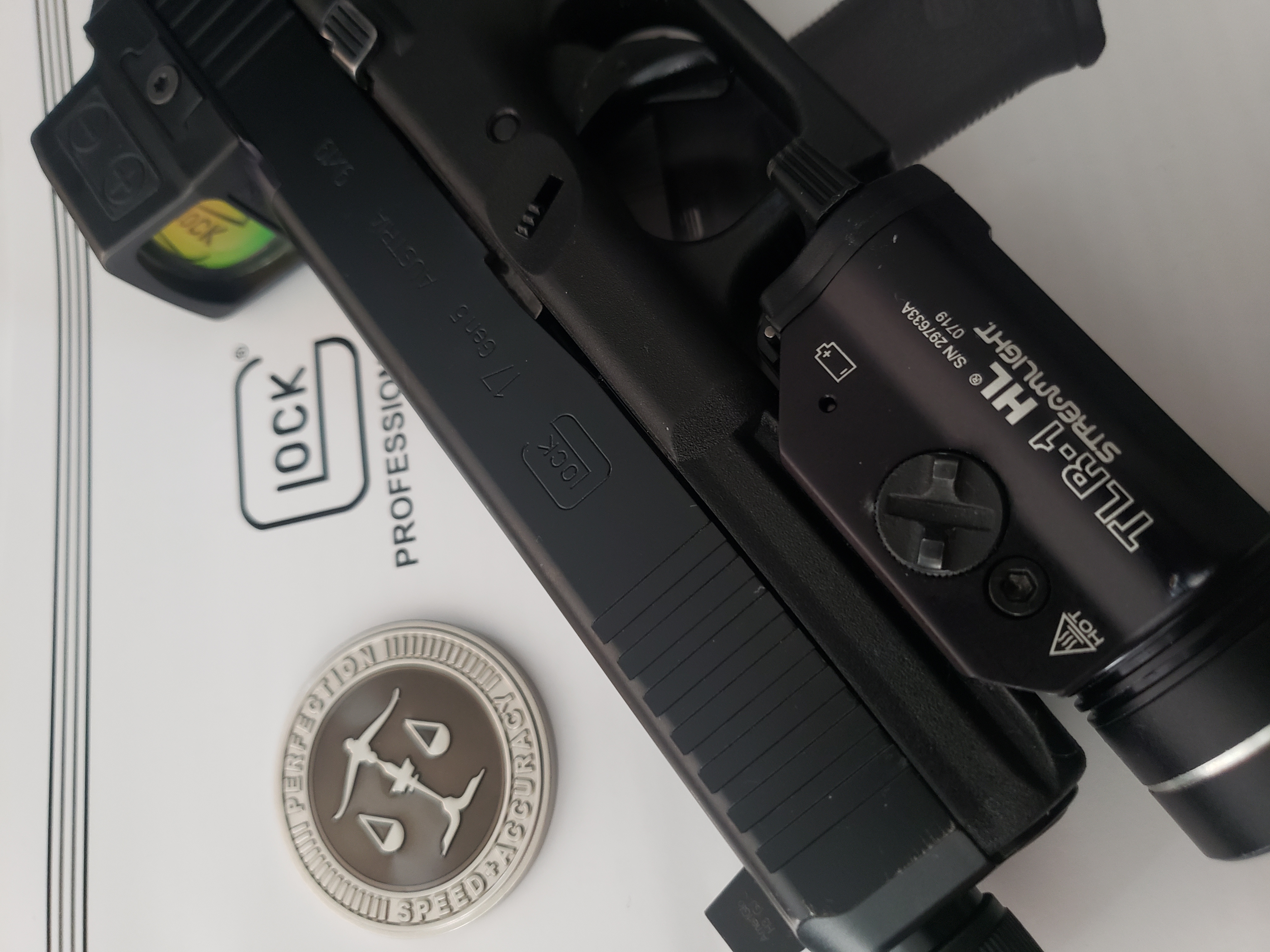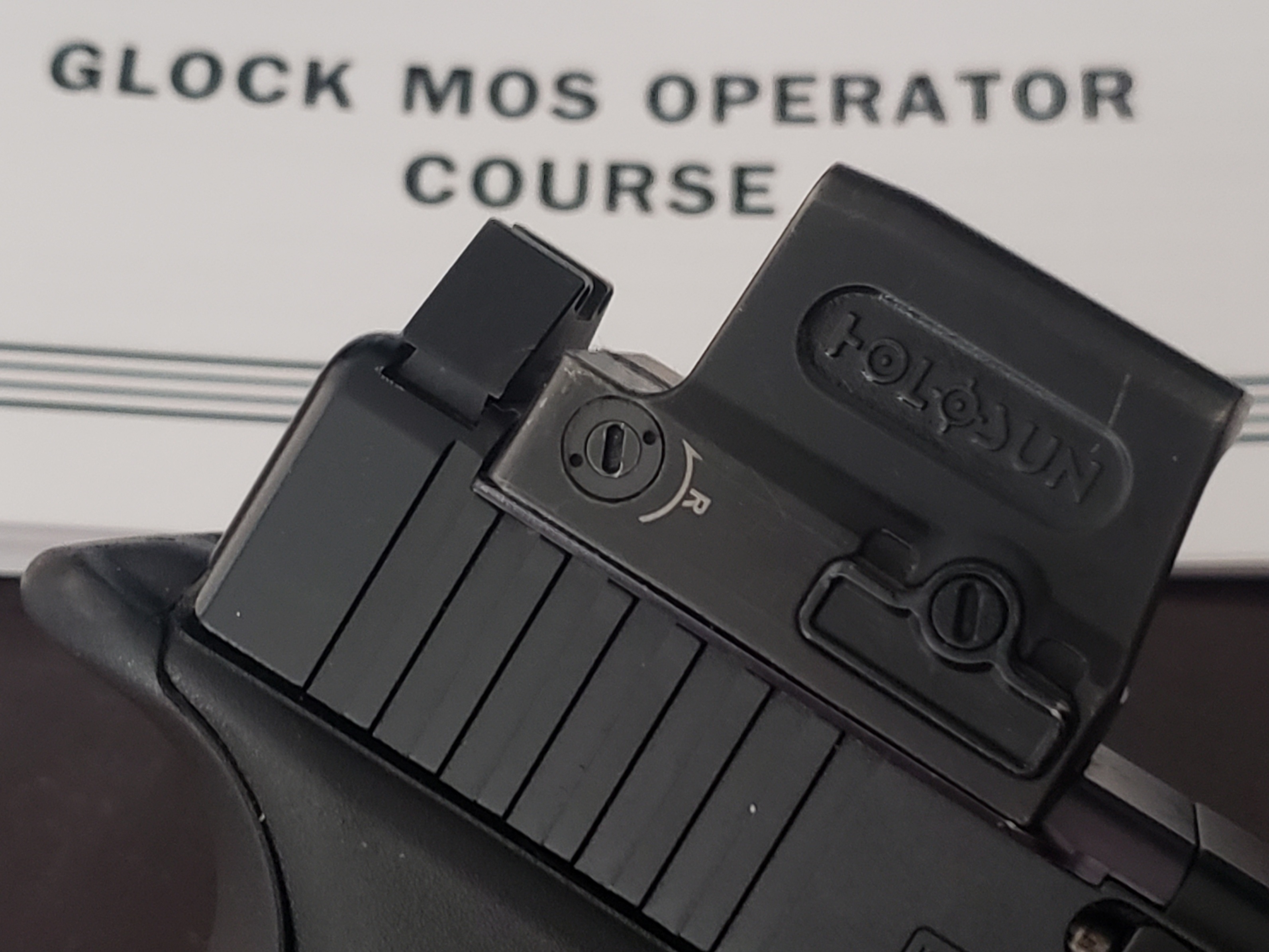Professional development is essential. While I don't fancy myself a "gun instructor" I occasionally get pressed into service as an assistant instructor on the range for Fieldcraft. I'll be the first to tell you that my perspective is from an armed civilian since 2001, and I don't have the background of my armed professional co-workers with military and law enforcement experience. My experience comes from everyday carry and a lot of time spent in shooting schools around the country. I am a self-admitted "training junkie", and love learning from the most up-to-date professionals with more hands-on time than I do. After attending a Glock Armorer course at the old Heber City Fieldcraft Survival HQ, I learned that Glock has a live-fire training division. With my relatively new move to NC, I was only a half day's drive to Smyrna, GA, and I couldn't resist the opportunity to receive formal training on their MOS platform. With green light approval to take the time from work, I paid out of pocket for the course, food, a nearby hotel room for 2 nights, and my gas to and from. Since most of my handgun training has been with iron sights, I wanted to learn the correct methodology and techniques to avoid developing training scars along the way. What follows in this blog is an overview of my experience at the 2-Day Glock MOS Operator Course.

Facility/Instructor
If you drove by the Glock Professional building in Smyrna, you wouldn't know you were looking at a shooting range. The building has no markings, and you have to be buzzed into it. Once inside, the classroom is comfortable, with plenty of lighting, visuals, and all the refinements of a proper schoolhouse. An assortment of swag items was available for purchase on the wall with an order form that could be completed and fulfilled by the office staff at the end of each day. Perhaps the greatest deal was the $10 slightly used magazines for common calibers available. I purchased 4, and I swear I could not tell a couple had ever been fired. The others may have had a smear of grease from loaded rounds, but the mags were sweet and worth every penny. The 25-yard range was air-conditioned and clean, with room for approximately 10-12 across. Heavy rubber sheets were suspended behind the target backers to prevent spalling, which no student reported. My Instructor, Christopher Wright, was a former Army and local law enforcement. He was humble in his introduction but later let his actions demonstrate his capability. His teaching style was relaxed, and he stated the class would be "gentlemanly" without burpees or tactical nonsense. He interjected the right amount of humor when needed and kept the course flow going. Perhaps the best aspect of his teaching style was the interest and respect he gave to the other firearms instructors in the class. He wanted to know if they felt there was another, or better, way to accomplish various tasks. Chris was the consummate professional throughout the course, and it became clearer as the course time ticked away why Glock hired him.
Training
The 2-Day Glock MOS Operator Course ran from 0800 to 1600 with an hour for lunch each day. Students were required to bring 1000 rounds, and that was split over the two days, with approximately 400 fired the first day and 350 the second. Students ran drills out of 3 loaded mags, with most students using a full-size (G17/45/34) or compact-size (G19) pistol with various open and closed emitters. The training was performed dry at times, and then other times, there were higher round counts. All aspects of marksmanship were taught, from correct stance, to grip, trigger press, follow through, and the all-important presentation of the pistol to the eye. Students ran through various drills and were given tips to return to their home ranges. These drills (failure drills, speed/emergency reload, movement, alternate position, etc.) would help the students perform in a self-defense scenario. Chris was quick to point out that his method of teaching was not the only way but can be adopted for a given situation since the situation will drive the tactics used. In that way, students were loaded with many options to solve a very complex problem, yet those options were all effortless to understand.
MOS Specific
The strict focus on the pistol red dot curriculum separated this course from others I've attended. I've been through other schools that taught irons and dots, and it was up to the student to decide which to use, but this course was dot focused (no pun intended.) The notes I took for this course fill up four pages, and it is impossible to distill the information into a short blog post, but there were some key takeaways. Students learned to burn through the dot and stay target-focused. Tape on the front and then tape on the rear of the optic helped drive home these ideas of your eyes working together to simplify aiming. Speaking of aiming, we utilized very similar angular deviation drills with the dot and noted not much distance between the holes punched in the paper at closer range. We also used the very top of the frame to guillotine the target along the collarbone. We found that with kinesthetic alignment, we could let the Glock rip with combat accuracy, which was "nipple to nipple" in a 360-degree circle. My most common mistake was aiming the dot instead of shooting the dot. With a heavy background in marksmanship, I wanted to use it like a front sight instead of a similar manner with a rifle red dot superimposing it over the target. We also learned that while the dot offers significant advantages, there will always be disadvantages. Dots are electronic, require proper mounting, and their form can help induce malfunctions during clearing if the ejection port is covered up. We learned various methods to get the pistol back up and running with even the largest "mailbox" shaped optics mounted.
Standards
Standards for time and accuracy should be a part of every firearms course. They help the students understand where they stand and give them a metric to reference and improve upon. Around 2:30pm the second day, Chris explained how we should load three magazines (one with four rounds, one with seven rounds, a dummy round, and then three more rounds, and one with eight rounds) and walked us through the standard drills. These drills were challenging but possible. Students were ranked based on time, as level one, two, three, or four. With each run through the drills, I advanced my level and ultimately was just under a second shy of level 4. With more trigger time, I'll have more confidence in finding the dot and getting rounds on target faster. For now, I'm content with achieving level three, and I was pleased to learn I won the top shot challenge coin for the lowest time out of 9 students. By the way, my fellow students were excellent shots, and the student body consisted of 6 out of 9 law enforcement from all over. Not only were they great on the range, but they also were solid dudes to banter with during frequent breaks and before class.

The Next Step
At one point in the AAR for the course, a student said "Red dots are the future", and Chris was quick to point out "Red dots are the present". They were the future five years ago." While stuck in traffic on the 5.5-hour drive home, I started looking at additional red dots as well as milling options and other MOS slides for my existing pistols. I still have a long way to go with the various new methods learned, but I am more confident in my ability to locate the dot quickly, have faith in my faster trigger press, and put rounds on target in a wide range of scenarios. I will also look at other courses Glock offers since the two training days were only $400 and an absolute bargain. In particular, I'd like to attend their low-profile course and return for more of those $10 mags, great instruction, and conversations with other professionals. I'm a training junkie, and this Glock course gave me a great fix. Now, where's the next?
